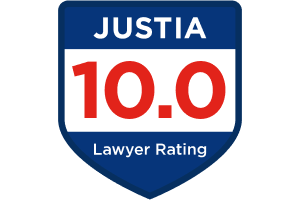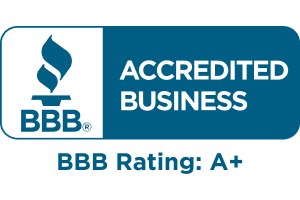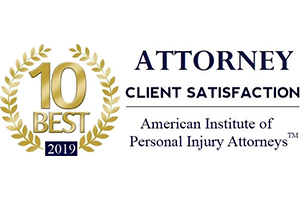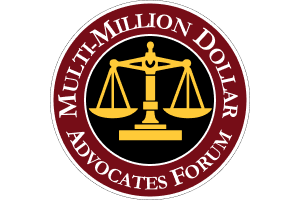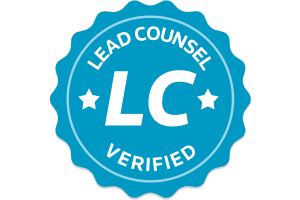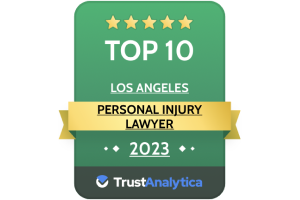- Free Consultation: 866-966-5240 Tap Here To Call Us
What to Do After A Car Accident in Los Angeles
(A comprehensive guide for drivers in L.A. to protect their health, rights, and recovery)
If you’ve just been involved in a car accident in Los Angeles — whether a minor fender-bender or a more serious crash — it can be a confusing and stressful time. You may be shaken physically and emotionally, and the sequence of events that follows can greatly impact your safety, your health, your ability to recover, and whether you can assert your rights. As a personal injury law firm in Los Angeles, we see far too many cases where a few early decisions made the difference between a smooth recovery and a protracted legal battle.
Here’s a step-by-step guide to what you should do immediately, in the hours and days following the incident, and beyond — especially if you live or were driving in Los Angeles.
(And yes — if any part of this is unclear, you can always contact a qualified L.A. personal injury attorney to walk you through your specific situation.)
1. Immediately After the Collision: Safety First
1.1 Check for Injuries & Ensure Safety
- First and foremost: check yourself and your passengers for injuries. Even if you feel okay, injuries like whiplash, internal trauma, or shock may not be obvious. (Tahmazian Law Firm, P.C.)
- If someone is injured, call 911 right away. In Los Angeles this means contacting local police (L.A.P.D. if within city limits) or the California Highway Patrol (CHP) on freeways. (California DMV)
- If your vehicle is in traffic or poses a hazard, and if it is safe and drivable, pull it to the side of the road, turn on hazards, and keep yourself and others safe from further harm. (Progressive)
- If you smell fuel, see smoke, or believe the vehicle may catch fire, move away from it immediately. Safety trumps everything else.
1.2 Stay at the Scene (Unless You Must Leave for Safety)
- Under California law, if there are injuries or fatalities, you must remain at the scene until law enforcement arrives unless your immediate departure is needed for medical care. (Shouse Law Group)
- Do not leave just because the crash seems minor. Leaving prematurely could create problems or liability issues (e.g., being accused of hit-and-run). (Shouse Law Group)
1.3 Avoid Mistakes in the Heat of the Moment
- You should not admit fault, blame the other driver, or say things like “I’m sorry” that could later be misconstrued as admitting you caused the crash. (AAA)
- You should not offer to pay the other driver, promise to take care of their damage, or sign any documents that release them from liability without consulting your insurer or attorney. (California Department of Insurance)
- Stay calm. You may feel shaken. Take a deep breath. Keeping a clear head will help you act wisely.
2. At the Scene: Gather Evidence & Exchange Information
Once you’ve secured safety and called emergency responders (if needed), begin documenting what has happened.
2.1 Document the Accident Scene
- Use your smartphone to take photos and videos of the scene:
- All vehicles involved—damage, make, model, license plates.
- The surrounding road conditions (skid marks, debris, weather, lighting).
- Traffic signals, signage, lane markings, or construction that might have contributed. (Frantz Law Group)
- Note the date, time, location (street names or freeway exit), direction of travel, etc. These details matter later.
- If there are witnesses, ask for their names and contact information (phone or email). Their statements may help later if fault is disputed. (Gammill Law –)
- If there are injuries, photograph visible injuries and note how you felt at the time — this initial documentation can help your case later.
2.2 Exchange Information with Other Drivers
Make sure you exchange the following with each driver involved (other than your own passengers):
- Name, address, phone number
- Driver’s license number
- Insurance company and policy number
- Vehicle make, model, year, and license plate number
- If applicable, name and contact of vehicle owner (if different from driver)
- You should also note any passengers in the other vehicle(s).
This helps ensure all parties are identified and that insurance carriers can be contacted. (Progressive)
Do not rely on the other driver to provide everything; take your own notes/photos to avoid missing something later.
2.3 Wait for the Police (If Called)
- In Los Angeles, if you called 911 and law enforcement arrives, an officer will likely prepare a police/crash report. Make sure you get the officer’s name, badge number, and report number. (Frantz Law Group)
- If law enforcement does not respond (for example in a very minor crash), you may optionally file a report later with the local police department. Having an official report helps your insurance claim. (AAA)
- Remain cooperative with police, but stick to the facts—do not speculate about fault, just explain what you saw.
3. After Leaving the Scene: Report, Seek Treatment & Contact Insurers
Getting off the roadway, you may feel relief — but your next actions matter just as much. Here’s what to do.
3.1 Seek Medical Evaluation Promptly
- Even if you feel okay, you should still get a medical evaluation as soon as possible. Symptoms may show up later (soreness, concussion, soft-tissue injury). (karlaw.com)
- Tell the medical provider you were in a car accident; be candid about how you feel and any symptoms (pain, stiffness, dizziness, numbness).
- Keep all records of your treatment: ER visits, doctor visits, physical therapy, medications, etc. These records form a key part of your injury claim if one is needed.
3.2 File the Required Reports
Under California law, you may need to file one or more reports based on the severity and nature of the crash:
- If the accident involved injuries, death or property damage over a certain threshold, you must file a written report to the DMV (Form SR-1) within 10 days. (Nolo)
- You must also notify your own insurance company of the accident as soon as reasonably possible—even if you’re not sure about fault or damage. Failure to do so can jeopardize your coverage. (Nolo)
3.3 Notify Your Insurance Company
- Report the incident to your insurer (or agents) and give them a factual account (not an admission of fault). (California Department of Insurance)
- Provide them with the other driver’s information, photos, and any documentation you have.
- Do not sign any waivers or release statements from the other party’s insurer without consulting your own insurer or an attorney.
- Ask your insurer what your policy covers, deductible, rental car provisions, etc.
3.4 Avoid Missteps with Communication
- Be careful about what you post on social media. Statements like “I feel great” or “everyone was fine” might be used against you later—even if you deceptively feel fine then have symptoms later.
- Do not volunteer unnecessary details to the other driver’s insurer or adjusters without consulting with your own attorney first — especially if there are injuries or major damage.
- Avoid admitting fault or describing the crash in a way that suggests your liability.
4. Understanding Fault, Insurance & Legal Rights in California
4.1 At-Fault System & Comparative Fault
- California uses an at-fault system: the driver who is legally determined to have caused the crash may be held responsible for damages. (karlaw.com)
- If you were partly at fault (for example, you were distracted), California allows for comparative fault — your recovery may be reduced by your percentage of fault.
4.2 Statute of Limitations & Filing Deadlines
- In California, the statute of limitations for a personal injury claim arising from a car accident is generally two years from the date of the accident. (Frantz Law Group)
- For property damage (vehicle damage) claims, the statute may differ.
- It’s crucial to act promptly: gathering evidence becomes harder with time, memories fade, witnesses disappear, and insurance companies mount their investigations.
4.3 Why Documentation and Early Steps Matter Legally
- The evidence you collect immediately (photos, witness contact info, medical records) can be pivotal if fault is contested. (Gammill Law –)
- A well-documented claim helps establish causation (you were injured because of the crash) and damages (what you’re asking for) — two of the essential elements in a personal injury case.
- If you skip medical treatment, delay reporting the crash, or give statements that undermine your position, you risk weakening your case.
4.4 Insurance Coverage & What To Know
- Review your policy: What is your bodily injury liability limit? What is your property damage limit? What about your uninsured/underinsured motorist coverage?
- If the other driver is uninsured or underinsured, your own policy’s uninsured/underinsured motorist (UM/UIM) coverage may apply. (Shouse Law Group)
- Always confirm coverage, policy requirements (such as timely reporting), and any limitations with your insurer.
5. Practical Considerations Specific to Los Angeles
5.1 Traffic, Freeways & Jurisdiction
- Los Angeles has heavy traffic, many freeways (I-5, I-10, I-405, US-101, etc.), and a high density of vehicles. Crashes often involve high speeds, complicated scenes, multiple vehicles, and sometimes non-motorists (pedestrians, cyclists).
- On freeways or state highways, the CHP may respond. Within city limits, local law enforcement may handle the crash. Knowing who responded helps when requesting reports.
5.2 Choosing a Towing or Repair Shop
- If your vehicle needs towing, wait (if possible) for a recognized tow company or one recommended by your insurer. Unfortunately, there are scams in Southern California where unauthorized tow trucks or body shops exploit crash victims. (The Sun)
- Be sure you understand where your vehicle is being taken and what cost or liability you may incur. Document everything.
5.3 Dealing with Rental Cars & Repairs
- If your vehicle is not drivable, check your insurance policy for rental car provisions. Notify your insurer early so you understand your rights and obligations.
- Keep all repair estimates, invoices, and communications with repair shops.
5.4 Communicating with Your Attorney/Claim Team
- If you hire a personal injury attorney in Los Angeles, make sure you provide them with all the documentation: police report, medical records, photos, witness info, and correspondence with the insurance company.
- If you begin to receive communications from the other driver’s insurer or lawyer, forward them to your attorney — don’t respond without legal advice.
6. After the Initial Shock: Recovery & Long-Term Considerations
6.1 Continued Medical Treatment
- Some injuries express themselves over time: whiplash, concussions, neck/back injuries, soft-tissue damage. Don’t ignore symptoms that develop days or weeks later.
- Follow up with your doctor, keep a treatment log (dates, provider, diagnosis, treatment, progress). This helps substantiate your injury claim.
6.2 Lost Wages & Impact on Daily Life
- If you miss work or your ability to work is reduced due to your injuries, document the time missed, pay stubs, employer statements, and any changes to your work capacity.
- Non-economic damages like pain and suffering, emotional distress, and reduced quality of life may also be part of a claim — though harder to quantify.
6.3 Vehicle Loss, Diminished Value & Rental Costs
- If your car is a total loss or significantly damaged, get multiple repair estimates, check for diminished value (the difference in market value because the car was in a crash).
- If you rented a replacement car, keep invoices and document how long you needed it and why.
6.4 Insurance Settlement Considerations
- If the at-fault driver’s insurance offers you a settlement, make sure you know exactly what you’re giving up. A full and final release may prevent you from seeking further compensation later.
- Don’t rush into accepting a settlement before your medical condition has stabilized or you know the full extent of your damages.
- Your attorney can help evaluate whether the offer is fair.
7. When to Consider Hiring a Personal Injury Attorney
Here are scenarios in which getting legal counsel is especially important:
- If there are serious injuries (fractures, head trauma, spinal injury) or long-term impairment.
- If fault is disputed or the other driver denies responsibility.
- If the other driver is uninsured or underinsured.
- If you foresee significant medical expenses, lost wages, or non-economic damages.
- If your insurer or the other party’s insurer is acting unfairly or pressuring you to settle prematurely.
An experienced Los Angeles personal injury attorney will help preserve evidence, communicate with insurers, calculate full damages, and advocate for your best interests.
8. Recap: Key Steps to Protect Yourself
Here’s a quick checklist to keep in your vehicle or share with clients:
- ✅ Ensure safety: check for injuries, call 911 if needed.
- ✅ Remain at the scene (unless leaving for medical care) and activate hazard lights if needed.
- ✅ Document: take photos/videos of vehicles, scene, damage, conditions.
- ✅ Exchange information: names, contact info, driver & vehicle details, insurance info.
- ✅ Gather witness info, officer’s name/badge/report number.
- ✅ Seek medical attention—even if you feel okay.
- ✅ Report the crash to your insurer promptly and file any required governmental reports (DMV, etc.).
- ✅ Avoid admitting fault or making statements damaging your case.
- ✅ Keep all documentation: medical, repair, rental, lost wages.
- ✅ Contact an attorney if the situation involves significant injuries, disputed fault, or complex damages.
- ✅ Don’t rush a settlement until your condition is stable and you know your full damages.
9. Why These Steps Matter — From the Lawyer’s Perspective
As a Los Angeles personal injury law practice, we often see how the early actions after a crash can make or break a case. Here are some of the reasons why:
- Evidence preservation: Photographs, witness statements, and timely reporting preserve the condition of the scene before things change or get cleaned up.
- Medical causation: If someone delays treatment, insurers may argue the condition is unrelated to the collision.
- Insurance claims timeline: If you don’t notify your insurer or file required reports promptly, you may violate your policy or create arguments of prejudice. (Nolo)
- Statute of limitations: Waiting too long means losing your right to file a claim.
- Settlement implications: Early settlement offers may look attractive, but if you settle before your injuries fully emerge, you may be stuck with future costs.
- Complex fault issues: Many L.A. crashes involve multiple vehicles, construction zones, or defective road conditions. Early documentation helps bring clarity.
10. Additional Considerations & FAQs for Los Angeles Drivers
FAQ: Do I have to call the police in every accident?
Not necessarily every minor fender-bender, but in California you must report the crash to law enforcement if someone was injured or killed, or if property damage exceeds a certain amount. (Nolo)
Even if no police come to the scene, filing a police report later or notifying your insurer is usually wise.
FAQ: What if I’m partially at fault?
California allows comparative fault. Even if you share some fault, you may still recover—but your award may be reduced by your percentage of fault. (karlaw.com)
This is why it’s important to collect evidence showing how the other driver contributed to the crash.
FAQ: What if the other driver flees the scene?
If the other driver leaves, you should still report the incident to the police. You may be able to claim under your own uninsured/underinsured motorist coverage. (Shouse Law Group)
Also, note every hit-and-run in L.A. still needs to be reported for your own protection.
FAQ: What about minor damages—do I still need to take all these steps?
Yes — even if damage seems minimal, injuries can show up later. Taking the steps above protects you and preserves your rights in case something develops. Many insurance carriers expect it. (AAA)
Also, sometimes what looks “minor” turns out to be more complicated (structural damage, hidden injury, etc.).
FAQ: Does my own insurance go up if I’m in an accident?
Possibly. Whether your premiums increase depends on your policy, fault determination, and the insurer’s rating practices. It’s wise to ask your insurer about how an accident may impact your rates.
FAQ: What about lawyer fees—how do they work?
Most personal injury attorneys in Los Angeles handle car accident cases on a contingency basis (they only get paid if you recover). Make sure you understand how fees and costs are handled before you sign anything.
11. Embedded Video Resource
Here’s a helpful video that goes through many of the steps after a crash:
Watch on YouTube
12. Final Thoughts & Your Next Steps
Car accidents are never routine, especially in Los Angeles. The moments and hours after a crash matter. The way you act can affect your health, your finances, and your legal recovery. By following the steps above, you’ll give yourself the best chance of moving from chaos to clarity.
If you or a loved one has been involved in a car accident in the Los Angeles area and you’re unsure about your rights or next steps, feel free to reach out for a consultation. Having someone experienced on your side can make a significant difference.
About Our Firm:
Steven M. Sweat, Personal Injury Lawyers, APC is a Los Angeles-based personal injury law practice dedicated to helping car accident victims navigate the complex legal landscape, deal with insurance companies, and secure fair compensation for injuries, lost wages, and pain/suffering. Contact us today for a free consultation.


